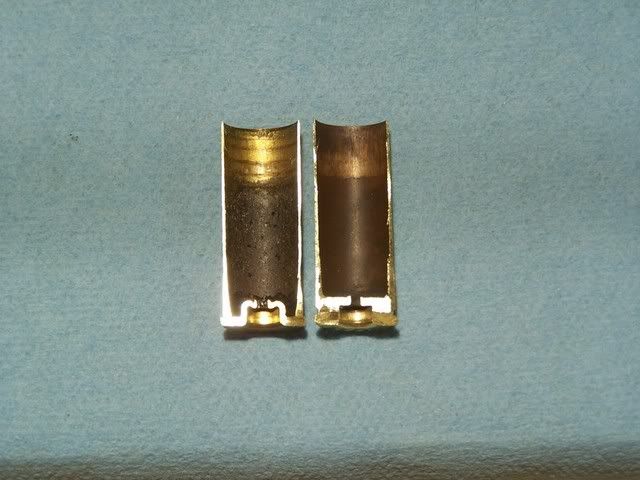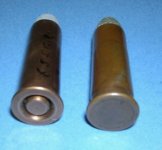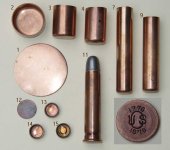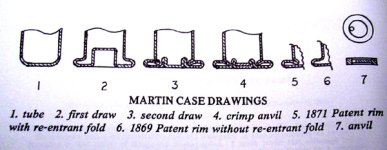Just a historical note. In the early days of center-fire cartridges, drawing brass cases, especially long ones like the .45-70, was not possible, so priming systems were developed to use center fire with drawn copper cases with the heads pretty much the same thickness as the rest of the case, like the rimfires of the day or a modern .22 LR case. Two such systems, the Martin and the Benet, were used in U.S. military ammunition, the latter for many years, since Frankford Arsenal was late in learning to draw brass cases.*
When drawn brass cases came into general use, the difference between them and the earlier copper type led the newer cases to be called "solid head" because the primer pocket was formed into the drawn brass rather than by folding the head like the Martin or having a cup inserted like the Benet.
But those "solid head" cases were actually what we now call "balloon head", so when you see cartridge boxes or literature from those days, recognize that there is "solid" and then there is "solid."
*Drawn copper Benet-primed cases rather notoriously failed in the unpleasant experience of one Lieutenant Colonel, late Brevet Brigadier General, George Armstrong Custer and his command. When the troopers' trapdoor Springfield carbines became hot, the copper cases had too little elasticity to extract properly. The extractors tore through the thin copper rims, leaving the cases stuck in the chambers. This proved greatly, if temporarily, embarrassing to the troopers involved.
Jim





